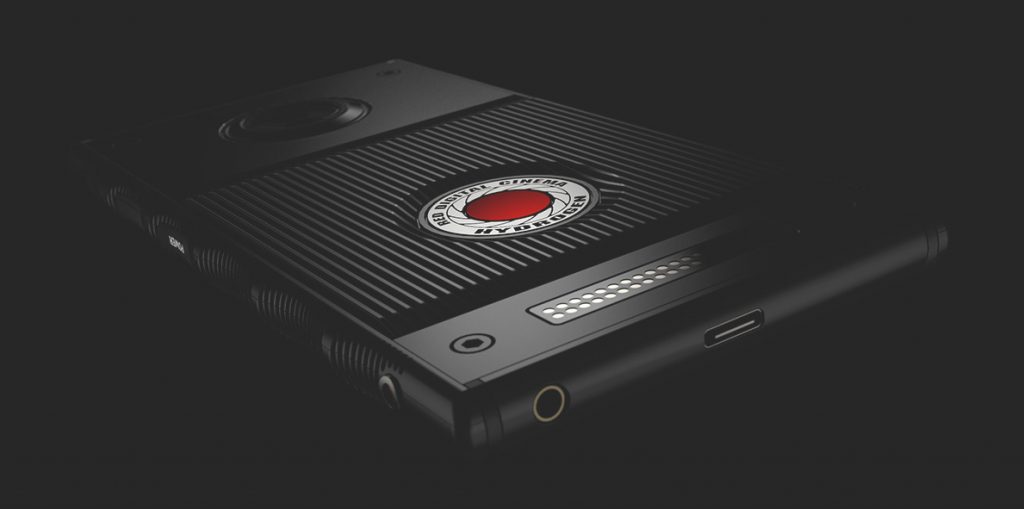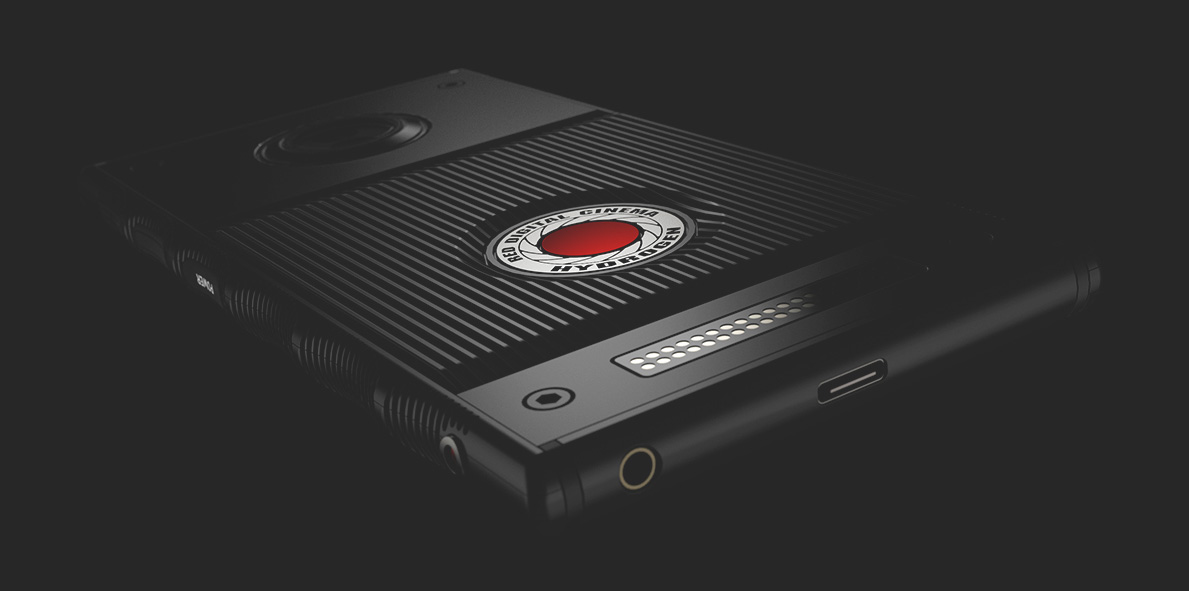
RED are set to release their first smartphone, Hydrogen, in 2018.
As things stand, this is the first ultra-premium device in a new market for phones, priced ahead of any of the current flagship smartphones. I think it’s an area that is going to see explosive growth.
Put simply consumers are getting a bit bored of their homogenous flagship devices. “Special” for about a week after release and then everybody has one! An iPhone 7 Plus is not actually premium. It’s normal.
There are millions who value their devices enough to start spending some really serious money, we’re talking enthusiast camera levels of money… $1500 on a phone… To get some form of exclusivity and a different concept, which is exactly what RED looks to be offering.
Absolutely the extra features and completely original RED-branded design make sense when it comes to Hydrogen.
If they can make the best Android phone on the market, it justifies itself no matter what.
Where I have my doubts over the concept is modularity.
Not many details were released about the add-ons and I believe not a single one will be available from launch day. The thing is, if you are going to build your phone up so that it is a cinema camera, it has to be worth doing so. It has to be different to a stand-alone cinema camera.
When you attach a phone to a cinema camera shooting standard filmic 4K content, it becomes basically a plain old touch screen.
This might be where holographic display technology and content give it an edge over current cameras – but suppose we are still going to be shooting normal 4K content for the time being… then you must consider what else a smartphone can bring to a camera? The app ecosystem of course. However, if RED exclusive apps for Hydrogen bring must-have features for filmmakers, you’d be arguing that the same functionality should already be built into their stand-alone cameras… And you’d be right.
Portability is another thing a phone can offer that is different to an EPIC, but if you have a large sensor, you need large optics and you cannot do all of this and maintain a pocketable form factor. So again, why not just buy a separate cinema camera or a DSLR?
To illustrate my point – RED would be very brave to go pricing the modules at $8000 for a cutting edge Super 35mm sensor and PL mount on Hydrogen One because these kind of customers would go for a stand-alone cinema camera instead I think – and if Hydrogen can indeed practically morph into an EPIC (as the patents suggest) just remember it still needs to differentiate itself, it cannot just become another screen on the back of a big cinema camera. That isn’t exciting enough.
Here’s what I think RED will do –
Clearly the holographic display and content will play a part. More on that in a moment.
I think when the modules come they will be portable and an upgrade from the standard built-in camera. Yes you will have a thicker device with them attached but I am sure it will still be pocketable, maybe even at 3-4 modules thick. Does it go beyond that? Maybe?!
The apps will probably be there to add cool features in addition to the usual smartphone apps. Professional 8K raw recording? Nah. Holographic content features? Warmer. A virtual reality app for an Hydrogen VR module, a headset like Samsung does? That’s the sort of think I think we’re talking about here – a fun camera for enthusiasts and a smartphone for RED users to replace their iPhone with, which exploits the smartphone market and capabilities, with added RED design skills and software development, on a device which clearly does imaging better than an Apple phone but not better than an EPIC.
I just don’t think Hydrogen is aimed at the pro-cinema camera market in terms of competing with existing cameras… Pro cinema camera customers will want one though.
As for holographic content and the display technology, I think Hydrogen will pioneer this stuff before their cinema cameras. If Holographic screens and content are truly the next big thing though, then I expect all of RED’s cinema cameras should have this feature in future, not just Hydrogen. Could Hydrogen be a way for RED to introduce this display technology (and content) to a bigger market than if they rolled it out on a $20,000 cinema camera? I think so.
Says Jim Jannard on the Hydrogen’s screen technology –
“It is multi-view (4-view) as compared to stereo 3D (2-view). Watching shocked faces light up when people see it is really motivating. There is no good way to describe it until you see it. Hopefully we will get some skeptics eyes on it soon… then they can tell you.
Our display is technology you haven’t seen before. It is not lenticular, which is inferior tech in every way, has been tried many times before and failed for good reason. (see Amazon 3D Fire, LG Optimus, etc). Lenticular display dramatically lowers resolution, cannot be turned off for standard 2D content, only works in one direction (usually landscape), has color crosstalk… to name just a few issues.
My bet is that other “big” companies will try to re-package lenticular 3D displays with eye-tracking in response to our program. Don’t fall for it.”
At the very least it sounds like this screen technology is one way to make a more innovative premium phone than Apple is willing to give us in 2018, although it will likely cost around $500 more.
I have not always agreed with Jim’s approach in the past as long-time readers will know but you have to hand it to RED for this smartphone – doubts over modularity aside, I think it’s bloody good. It’s what Canon and Nikon should have done at least 5 years ago; an expensive premium product, aimed at the faithful, branded and designed like a piece of advanced weaponry in your pocket, shooting far better imagery than any other phone on the market for those who really value high-technology. Who knows, if Canikon had done this, or even have had the balls to think about doing it on a meaningful scale, maybe they would have lost less of the camera market to Apple.
There is definitely an appetite among customers for getting out of the crowded iPhone / Samsung melee of normies and standing out with something a bit more innovative. It’s 2017. Who still dreams about having a flagship phone that any basic bitch on an AT&T contract can get? 😉





